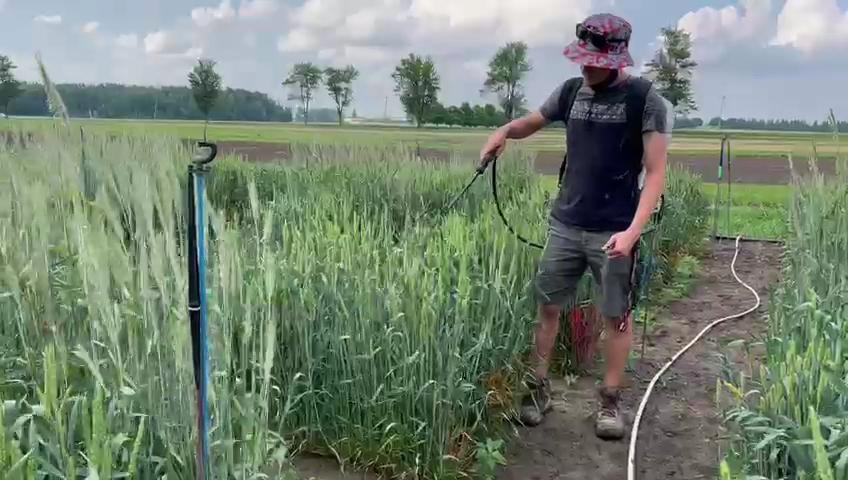Managing microbes, curbing climate gases
Alliance-funded researcher Dr. Manish Raizada joins Between the Rows podcast to discuss the role nitrogen-fixing microbes have on reducing greenhouse gas emissions and yield growth.
Alliance-funded researcher Dr. Manish Raizada joins Between the Rows podcast to discuss the role nitrogen-fixing microbes have on reducing greenhouse gas emissions and yield growth.

Dr. Rafikali Momin, an experienced leader and laboratory sciences expert, has been named the new director of the Agriculture and Food Laboratory and co-director of University of Guelph’s Laboratory Services Division as of April 18, 2022.
As the incidence of herbicide-resistant Canada fleabane rises in central and eastern Ontario to match the southwest, Dr. Peter Sikkema of the University of Guelph’s Ridgetown Campus has been leading a team of researchers tracking the herbicide-resistant varieties since their 2010 arrival.
Building material made of corn cobs, chips made of duckweed and grain, and a non-alcoholic oat fibre beverage, were each named top innovations at this year’s Project SOY (Sustainable Opportunities for You) Plus finale event at the University of Guelph.

Riley McConachie grew up in a small town surrounded by agriculture. While studying environment and resource management at the University of Guelph, he discovered a keen interest in research through jobs with Agriculture and Agri-Food Canada and the Canadian Food Inspection Agency.
With funding from OMAFRA, through the Ontario Agri-Food Innovation Alliance, the Animal Health Laboratory (AHL) uses cutting-edge technologies to test, diagnose and monitor infectious pathogens. The AHL continues to work closely with the CFIA and OMAFRA on the diagnosis of avian influenza in Ontario. Read the story.
Poultry immunologist and Alliance-funded researcher Dr. Shayan Sharif discussed avian flu outbreaks with CBC News.
Alliance-funded researcher Dr. Claudia Wagner-Riddle spoke to Chatelaine about the work being done in Canada to reduce beef’s environmental footprint.
Alliance-funded researcher Dr. Shayan Sharif discusses why the discovery of a “highly pathogenic subtype” of avian influenza across the globe and in Canada is worrisome, and how more effective and efficient ways to monitor and control the outbreaks are being explored.

Michelle Edwards, a longtime data management strategy leader, has been appointed as the inaugural director of agri-food data strategy with the Office of Research at the University of Guelph.
A U of G graduate, she will begin her appointment April 5.
This new position will provide stable, long-term leadership to agri-food research data strategy in the Office of Research.